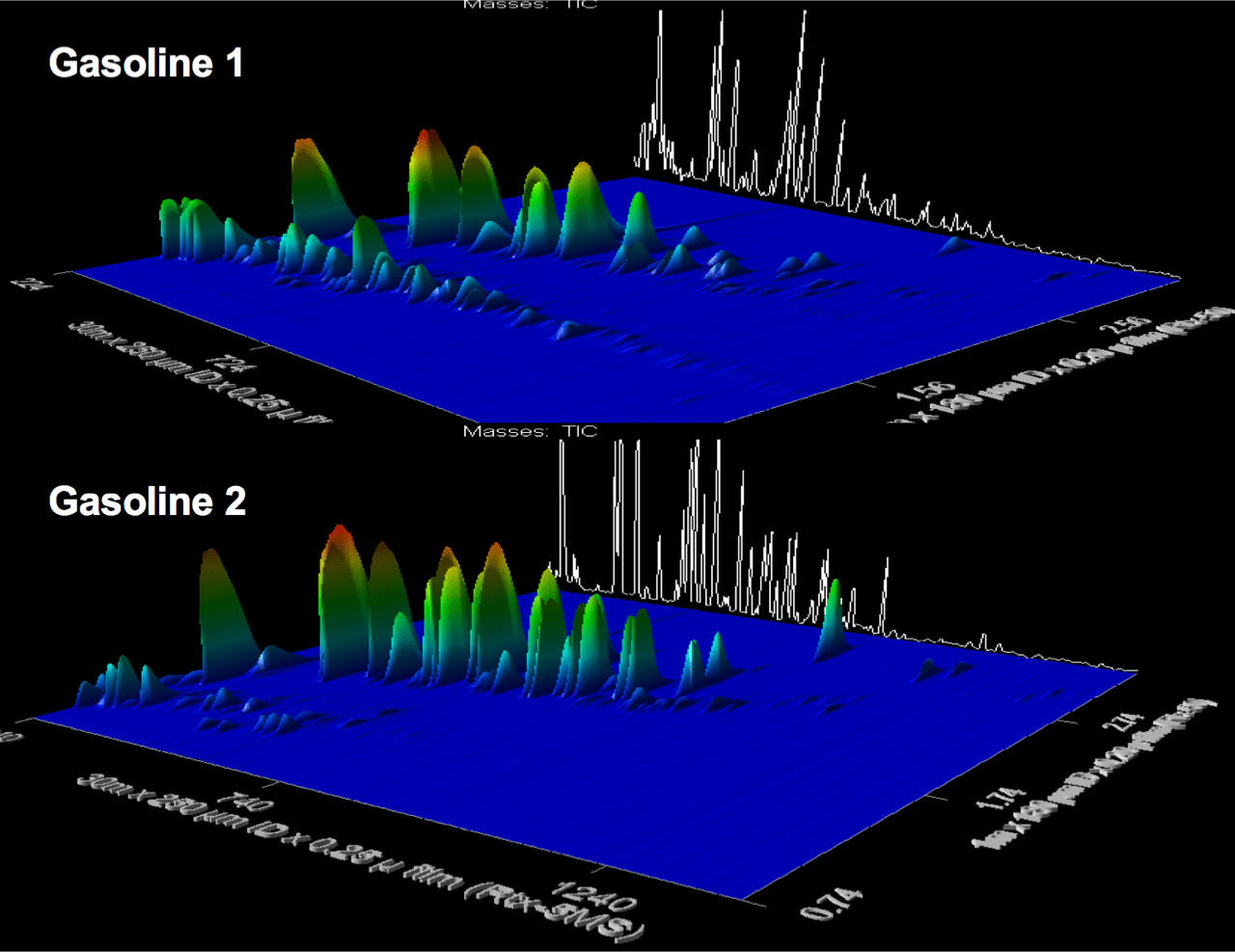As part of my seminars, with the latest being in April 2017 at the 2017 International Association Arson Investigations (IAAI) in Las Vegas, I routinely discuss the future of analytical chemistry, and in this case how it applies to ignitable liquid residue(ILR) analysis.
I will tell the audience that we are currently in the golden age of analytical chemistry. In this golden age, we can separate more compounds than ever before and can detect lower and lower concentrations of things in just about any matrix.
How does the Golden Age of Analytical Chemistry apply to ILR Analysis?
ILRs can be complex mixtures, such as gasoline containing between 300-500 compounds. All 300 to 500 compounds could be measured in a sample if we wanted to because the instruments have the potential resolving power to see all these peaks. As for detection limits, we can always go lower with the detection limits using more advanced techniques than the routine benchtop mass spectrometer.
As part of my presentations, I discussed the use of 2D-GC-TOFMS. It is a big acronym and the name is actually quite cumbersome – two dimensional-gas chromatography-time of flight mass spectrometry. Yikes!
This technique was actually mentioned for ILR analysis in 2008 in Stauffer et al.'s book entitled 'Fire Debris Analysis' and was proposed to be the future of ILR analysis. So, I am not the only one that promotes the use of this technique
The 2D-GC-TOFMS allows two main advances over routine analysis. The first is detection limits. The detection system (TOFMS) is generally more sensitive (10-100 times) than bench top quadrupole mass spectrometers.
The second is the extreme resolving power of the separation system (2D-GC). The two dimensional separation has unparalleled resolving power providing the ability to separate interferences from the targeted marker ILR compounds as well as the ability to measure more markers than routine ILR analysis.
This technique provides a strategic analysis advantage for ILRs especially for wildfire samples. There are so many natural compounds present in wildfire samples that a regular chromatogram from routine analysis gets quite busy, with interferences often preventing the identification of ILRs.
Do any Routine Labs use 2DGC Analysis for Fire Debris Analysis?
This is a common question during and after my presentation.
Alas, this technique is not yet main stream. I know of no routine labs with this capability and most instruments running ILRs are only available at universities.




